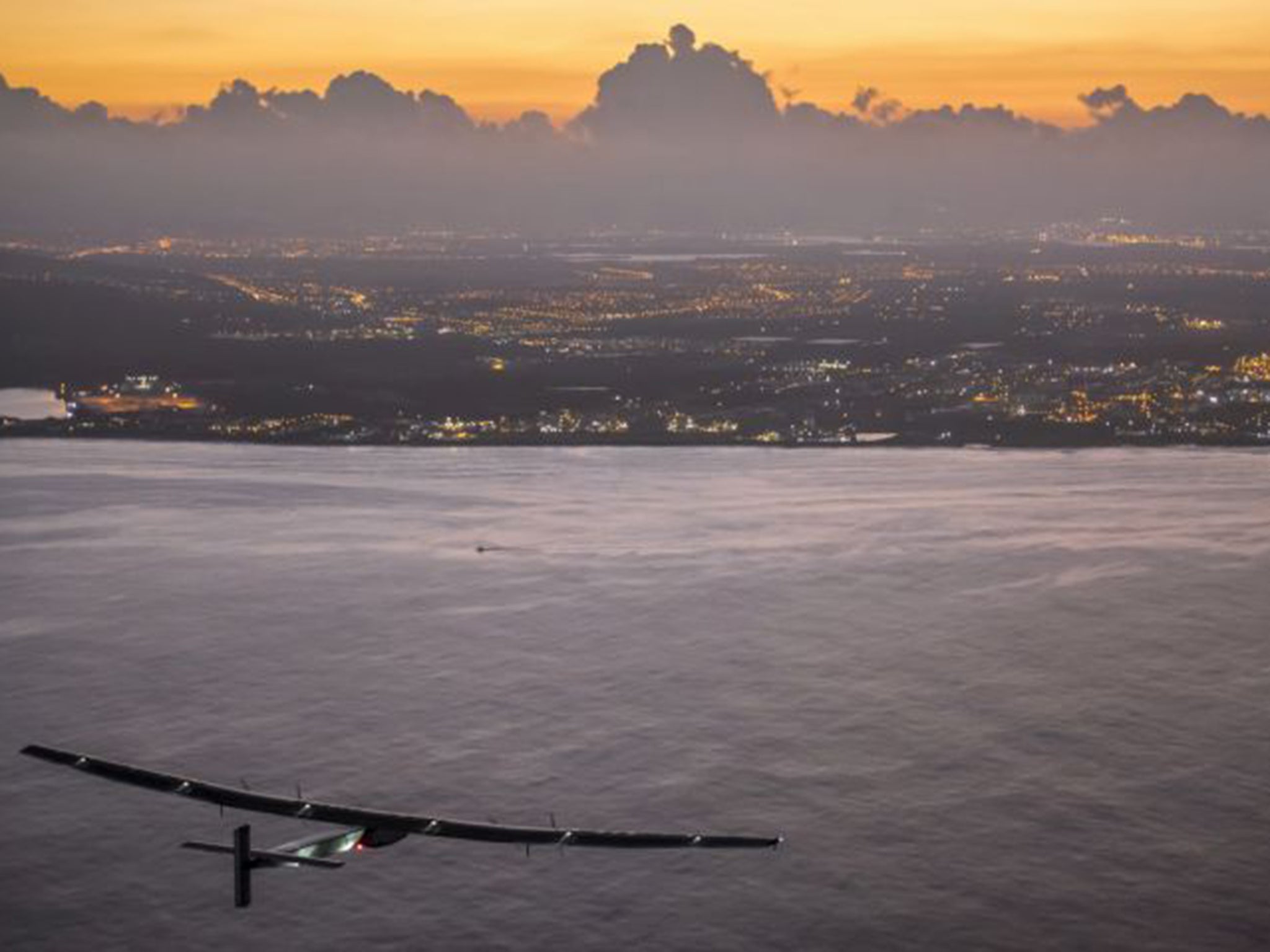Solar Impulse 2: Sun-powered plane journey is proof of human endurance as well as renewable energy, pilots say
The pilots are using self-hypnosis to stay awake and alert during the long journey, they said as they finished one of the most dangerous and intense parts of their flight

Your support helps us to tell the story
From reproductive rights to climate change to Big Tech, The Independent is on the ground when the story is developing. Whether it's investigating the financials of Elon Musk's pro-Trump PAC or producing our latest documentary, 'The A Word', which shines a light on the American women fighting for reproductive rights, we know how important it is to parse out the facts from the messaging.
At such a critical moment in US history, we need reporters on the ground. Your donation allows us to keep sending journalists to speak to both sides of the story.
The Independent is trusted by Americans across the entire political spectrum. And unlike many other quality news outlets, we choose not to lock Americans out of our reporting and analysis with paywalls. We believe quality journalism should be available to everyone, paid for by those who can afford it.
Your support makes all the difference.Two Swiss pilots who have just completed one of the most dangerous parts of their round-the-world flight have said they are showing the endurance of the human body.
The two pilots are taking turns to fly a fully solar-powered plane around the world, in what they have said is a way of showing the importance of renewable energy. But the flight also shows how much the human body can take, they have said.
The comments come after pilot Bertrand Piccard finished a flight across a large part of the Pacific Ocean. During that three-day flight he slept only 20 minutes at a time, holed up in a tiny cockpit that has no heating.
During that time he had to maintain constant contact with control centre in Europe.
"You have interviews, navigation control, communications with the control center in Monaco. You have health checks, a lot of health checks," Piccard said. "It's very active, there are a lot of things to do, but you can nevertheless enjoy it."
The pilots have managed to stay awake and alert through the long, cold journeys by using self-hypnosis, Piccard said. He has used heating packs to warm his shoes and gloves, with which he also heats his ready-made meals.
Piccard landed the Solar Impulse 2 in Mountain View, in the Silicon Valley south of San Francisco, on Saturday night following a 62-hour, nonstop solo flight from Hawaii without fuel.
The landing came hours after Piccard made a fly-by over the Golden Gate Bridge as spectators below watched the narrow aircraft with extra wide wings.
Piccard and Andre Borschberg have been taking turns flying the plane on an around-the-world trip since taking off from Abu Dhabi, the capital of the United Arab Emirates, in March 2015. It made stops in Oman, Myanmar, China, Japan and Hawaii.
The trans-Pacific legs were the riskiest part of the plane's travels because of the lack of emergency landing sites.
"We have demonstrated it is feasible to fly many days, many nights, that the technology works" said Borschberg, 63, who piloted the plane a five-day trip from Japan to Hawaii and who kept himself alert by doing yoga poses and meditation.
The project has helped to show that "as a human being you can be sufficiently sustainable to be able to fly at least five days in such a plane."
The aircraft faced a few bumps along the way.
The Solar Impulse 2 landed in Hawaii in July and was forced to stay in the islands after the plane's battery system sustained heat damage on its trip from Japan. The team was delayed in Asia, too. When first attempting to fly from Nanjing, China, to Hawaii, the crew had to divert to Japan because of unfavorable weather and a damaged wing.
A month later, with better weather conditions, the plane left Nagoya in central Japan for Hawaii.
The plane's ideal flight speed is about 28 mph, though that can double during the day when the sun's rays are strongest. The carbon-fiber aircraft weighs over 5,000 pounds, about as much as a midsize truck.
The plane's wings, which stretch wider than those of a Boeing 747, are equipped with 17,000 solar cells that power propellers and charge batteries. The plane runs on stored energy at night.
Solar Impulse 2 will make three more stops in the United States before crossing the Atlantic Ocean to Europe or northern Africa, according to the website documenting the journey.
Borschberg said the plane will again take flight this week, and the next stop could be Phoenix. But that will depend on weather.
The project, which is estimated to cost more than $100 million, began in 2002 to highlight the importance of renewable energy and the spirit of innovation.
"I think innovation and pioneering must continue," Piccard said. "It must continue for better quality of life, for clean technologies, for renewable energy. This is where the pioneers can really express themselves and be successful."
Solar-powered air travel is not yet commercially practical, given the slow travel time, weather and weight constraints of the aircraft.
"Maybe it will be boring in 20 years when all the airplanes will be electric and people will say 'Oh it's routine.' But now, today, an airplane that is electric, with electric engines, that produces its own energy with the sun, it can never be boring," Piccard said.
Additional reporting by Associated Press
Join our commenting forum
Join thought-provoking conversations, follow other Independent readers and see their replies
Comments